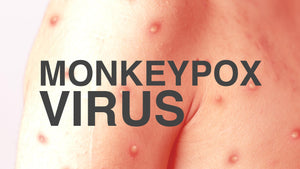
All you need to know about Caring for Dissolvable Stitches
What are dissolvable stitches? Dissolvable stitches, also referred to as absorbable sutures are stitches that do not require removal. Traditionally any wound or surgical incision would be stitched up with standard sutures. This suture material is like a thread and is used to sew the cut. After a few days, as the wound or the incision starts to heal, the doctor will cut the suture and remove it, preventing it from growing into the newly formed skin. Absorbable sutures or dissolvable stitches do not require such a removal. In the natural process of healing, they are absorbed by the body and some parts of the suture dry up and fall off. These days doctors usually use a combination of dissolvable and standard sutures in India. This means that internal sewing is generally performed with absorbable sutures while the external incision may be held together by either or by both dissolvable and standard sutures. Absorbable stitches are now gaining great popularity as they do not often require a second visit to the doctor’s clinic and do not cause additional pain since they are not removed. Aftercare, however, remains vital for proper healing. Let us look at some tips to caring for these absorbable sutures. Caring for dissolvable stitches :
1. If you have received dissolvable stitches, it is important to keep the wound or the stitched area dry for at least 24 hours. After this, you may be permitted to take showers, but it is best to avoid soaking in baths and swimming till the stitches are completely absorbed. It is best to check with your doctor for instructions about wetting the stitches after the initial 24 hours as well.
2. If the stitched incision or wound has not been dressed and has been left to heal in the open, it is important not to apply pressure on the area to avoid reopening the wound. It is best to wear protective clothing over the stitches to prevent dust and infection from entering the wound.
3. Once the doctor gives you the go-ahead, you will be required to gently clean the stitches with soap and water. Avoid scrubbing and picking on the stitches. They will dissolve with time or will fall away. Do not clean your absorbable sutures with hydrogen peroxide.
4. Scab forming is a natural part of wound healing. Do not pick the scabs as they form over the stitches. Do not scratch the wound even if you experience an itching sensation. In these cases, it is best to apply the ointment recommended by the doctor to hasten the healing process.
5. If the doctor has bandaged the wound, it may be necessary to change the bandages at regular intervals. Check with your doctor about the frequency and changing process. These days you can order most medical supplies such as bandages, sutures, and adult diapers online.
6. Once the dissolvable stitches start to fall off, some little parts of these may stick out. Do not try to forcibly remove them. These will either be absorbed by the body or will fall off eventually.
7. Absorbable sutures may take from days to several months to be completely absorbed. Do not be impatient. Consult your doctor if you think the healing process is taking too long. However, watch out for signs of excess bleeding, pus formation, inflammation and swelling, pain, or fevers. Seek immediate medical attention in such cases.







